Hannover Industry Messe 2016: Back to the Future?
At Hannover Messe, we learned that Industry 4.0 is already in practice, and the market for these interconnected products is growing.
As many Europeans focus on challenges such as the migrant crisis, BREXIT, and terrorism in their capital cities, and most Americans follow the presidential election process, the economy, and the Middle East situation, there are less-visible developments that could have a profound impact on global economic growth. This includes the connector industry.
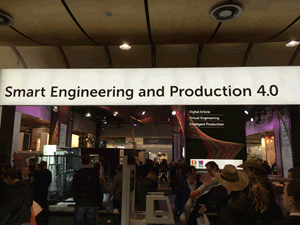 One of these developments is the drive towards digitalization of manufacturing – the Smart Factory, Industry 4.0, the Internet of Things, or Factory 2.0, whichever name is being used in your part of the world.
One of these developments is the drive towards digitalization of manufacturing – the Smart Factory, Industry 4.0, the Internet of Things, or Factory 2.0, whichever name is being used in your part of the world.
Industry 4.0
The factory of tomorrow will be “smart,” we are told. The factory will talk to customers and suppliers, it will make customized products with a batch size of one, and it will take care of after-sales support and customer feedback loops.
Customers are no longer satisfied with just the product. They want the full life-cycle experience that starts before the product is manufactured and continues as long as the product is in use by the customer. Smart factories will be able to make smart products in a smart way and deliver smart services to the customer.
For example: When I order a computer, I not only want to decide on its specifications, color, and size; going a step further, I also want to be able to select some of the components that are being used in the computer, I want to know or influence where my computer is manufactured (i.e. in a low-cost country or in a Western factory), and I may want to have a say about the environmental impact, too. When using the device after delivery, I want the manufacturer to know how often I use it and which features are most useful and which aren’t, which components failed first, and how the design can be improved. This representation is probably quite basic and the real experience will be much richer.
This scenario poses enormous challenges to manufacturers unless they are organized around the concept of a smart factory – a factory that is able to communicate with the customer before and during production and can follow the product (and customer) after it has been delivered. This requires the Internet of Things to be incorporated into the manufacturing process and beyond – in other words: “Industry 4.0” or the “Smart Factory.” The bottom line is that more factory floor components and systems will have communication capabilities, and these capabilities will be incorporated in the end-user products as well. In addition, the networks will be linked together. This will eventually create a huge digital ecosystem where the Cloud is used as a storage space for the Big Data generated by these processes.
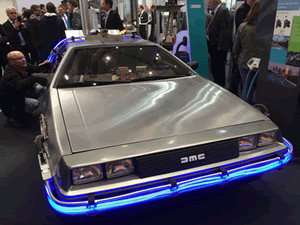
Phoenix Contact goes “back the to future” at the Hannover Messe.
Is all this happening overnight? No, of course not. A lot of the technology that is currently marketed as essential to the factory of the future, Industry 4.0 , or the Internet of Things, is already available and has even been around for quite some time. In a sense we are all going back to future! The process to interconnect everything started years ago and will continue for many years to come. However, as gradual as the process may appear to take hold in our factories, the impact on our lives and the way we manufacture things will change profoundly.
It will not only impact B2C businesses but also B2B sales and any other type of business relation. It will therefore also impact how connector makers do business and how they interact with their customers, suppliers, and distributors.
Let’s have a look at what it means in the real world. A nice example of this is the concept conceived by Wieland Electric – Wieplan.
![WiePLAN: A powerful software tool for the configuration of terminal block assemblies]](https://www.connectorsupplier.com/wp-content/uploads/wiePlan.gif)
WiePLAN: A powerful software tool for the configuration of terminal block assemblies
wiePLAN is an online application that allows customers to configure a DIN-rail-based product using Wieland Selos and Fasis terminal blocks; obtain a price for the design instantly; receive the accompanying documentation, specifications, and drawings (2D and 3D); and visualize the product via the intuitive software selection tool. Wieland’s wiePLAN software can be linked to the CAE engineering tool ePLAN 5 and its successor system Electric P8. Express delivery within five days is available as the whole system is integrated in the company’s SAP system, which sends the order directly to production (planning). Such integrated software is an example of a tool that uses a variety of databases and systems that are all interconnected.
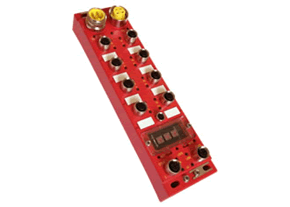
Molex Safety Communication Module
Another example comes from Molex. One of the world’s leading connector manufacturers, Molex is also branching out into solutions that encompass communication modules, special cable assemblies, and networks that connect one end (the sensor/actuator) to the other end (the controller or PLC). In other words, Molex provides the customer with the entire infrastructure between two end stations (sensor/PLC). This includes safety components that can be used and are approved for use in applications where (human) safety is at stake.
In other words, the industry 4.0 concept, in which everything is connected to everything else, is already in practice, and the market for these interconnected products is still growing. More and more often, customers ask for an interconnected infrastructure instead of a box of connectors. This trend will challenge connector makers to venture into new domains and applications. It will increase the competitive playing field for connector manufacturers and systems suppliers alike and this will inevitably push innovation to higher levels. It may also see the birth of new forms of cooperation and joint ventures and may boost acquisitions. In 4Q15, Omron Corporation, a company active in the factory automation and components market and also a connector supplier, acquired Adept Technology Inc., a well-known US-based industrial robot maker.
The ZVEI, the German Electrical and Electronic Manufacturers’ Association, has published a white paper* called: “Electrical Connectivity for Industry 4.0? Challenges for Electrical Connectivity as a Result of Emerging Industry 4.0 Concepts.” This is an interesting read, prepared with the help of TE Connectivity, Phoenix Contact, HARTING, and Weidmueller, among others.
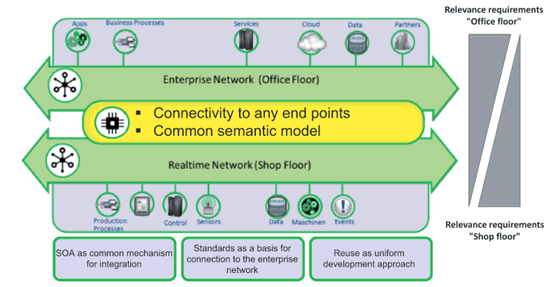
SOA – service-oriented architecture (Source: ZVEI)
Transatlantic Trade and Investment Partnership
A second, very topical development that will impact the way we do business together, and could potentially change the connector industry, too, is that of the free trade agreement between the United States and the EU.
In a nutshell, the Transatlantic Trade and Investment Partnership (TTIP) would mostly serve to restructure the existing trade relationship between the EU and the US. This will be realized by cutting tariffs, removing trade barriers, and harmonizing industry standards and regulations that limit the exchange of goods and services to open market access. According to the website of the European Commission, the proposed treaty would save “unnecessary time and money for companies who want to sell their products on both markets.” Large corporations would benefit most from this agreement, with specific sectors such as the motor vehicle industry and metal industry expected to increase exports upwards of 40% and result in higher revenue while cutting costs; some companies are expected to save up to 80%.
TTIP will, if passed, potentially have a significant impact on the connector industry, something that concerns us all. If, and this is a big “if,” the TTIP agreement is signed, it will mean a serious reduction – if not abolishment – of all trade barriers and import tariffs between the two economic blocks. We already know that the world’s leading connector suppliers (by revenue) are based in the US, and this will surely generate new opportunities and cost savings for these manufacturers to do business in Europe. On the other hand, there are many medium- and small-sized European connector makers for whom it would be of great interest to expand into North America. As a result, competition may intensify on both sides of the Atlantic, offering more opportunities and, at the same time, more competition for all parties involved.
There may be many benefits to implementing TTIP, but of course there are also down sides. One of the potential deal-breakers is the Investor-to-State Dispute Settlement (ISDS), which allows a foreign investor (e.g. a corporation) to file lawsuits against a state (e.g. Germany) if a change in government legislation or policy negatively affects their revenues. In other words, a foreign corporation can sue another country if it feels it lost out on a business opportunity. If the corporation wins, it is likely that nation’s taxpayers will have to foot the bill. Another deal-breaker could be the potential end to the “Buy American” clauses, which stipulate that US government procurement operations should buy only American goods and services.
Obviously, the negotiations around the agreement are much more complex than this, and there are many more arguments in favor and against the TTIP. But as President Obama and Chancellor Merkel opened the Hannover Industry Show this year, they made a push in favor of putting in place the agreement, at least partially, before the end of Obama’s term in January 2017.
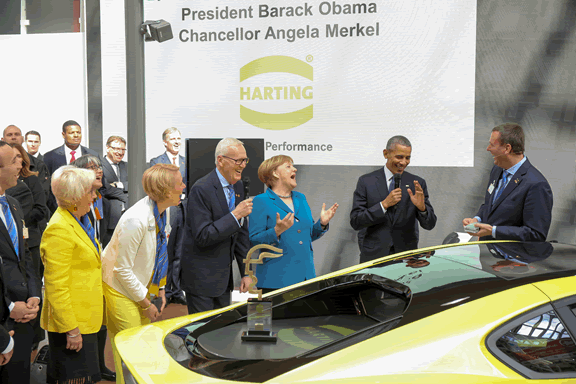
President Obama and Chancellor Merkel visit HARTING at Hannover Messe (source: HARTING)
* The white paper is available here in German. The English version will probably be available for download soon (a paper-based version was distributed during the Hannover Industry Messe 2016).
- The Industrial Market for Connectors in a Changing World - April 20, 2021
- How Key Trends in the Transportation Market Will Impact Electronics Growth - March 17, 2020
- Automation Means a Bright Forecast for Industrial Connectors - February 19, 2019






